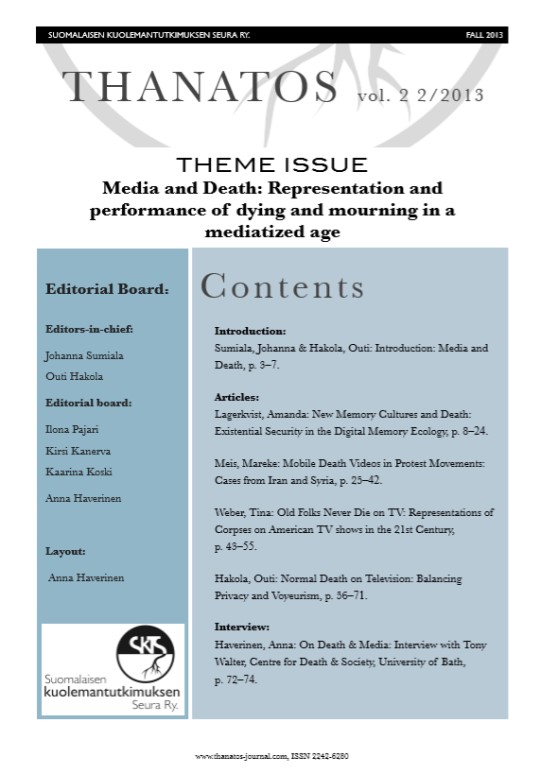Mobile Death Videos in Protest Movements: Cases from Iran and Syria
Abstrakti
In the Iranian and Syrian protest movements, the emergence of videos of dying protest participants recorded by mobile phones and disseminated via social platforms (esp. YouTube) have played a significant role in mobilizing and solidarizing the broader public for these movements. In this regard, several questions on the broader effects of such media phenomena in protest and conflict contexts arise; e.g., on how mobile videos recording death are perceived and construed in different media and public contexts, and which implications the prevalence of such videos brings about for the public perception and interpretation of the Iranian and Syrian protests and conflicts. The article presents an explorative study on two mobile death videos that appeared in course of the Iranian and Syrian protests and conflicts: the mobile video of Neda Agha-Soltan’s death in Iran and the mobile video of a man filming his own death in Syria. Special emphasis is given to the discursive and media-aesthetical effects of these mobile death videos by focusing on their symbolic and representational impact, the affectivity of these recordings of death, and the discursive and aesthetical practices in bringing forward certain accounts on the protest and conflict reality in Iran and Syria.
Tiedostolataukset
Julkaistu
Numero
Osasto
Lisenssi
Copyright (c) 2023 Mareike Meis

Tämä työ on lisensoitu Creative Commons Nimeä-EiKaupallinen-EiMuutoksia 4.0 Kansainvälinen Julkinen -lisenssillä.





